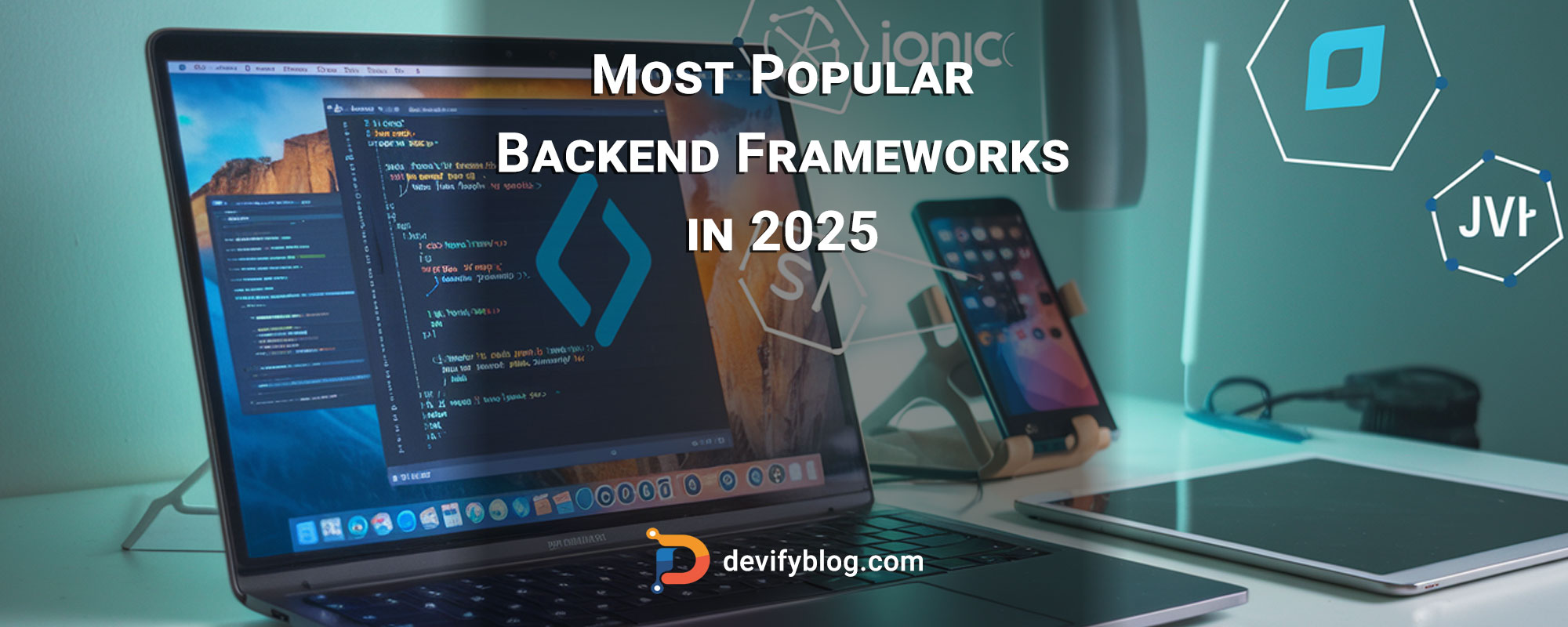Web development is at the forefront of adopting new technologies that handle simple to complex data. Using the right backend technology can boost your development and application performance. Backend frameworks play a vital role in simplifying server-side logic, database interactions, and API functions and provide pre-built modules, tools, and libraries to make developers' jobs much easier.
As 2025 approaches, many backend frameworks will play a key role in web development in 2024 as well as in 2025. From high-performance applications to scalable microservices and secure enterprise solutions, the right backend framework can make a huge difference in the success of a project. Developers will be faced with some of the frameworks in 2025 that were in leading positions in 2024. Django, Dot net, and Spring Boot are some of them. Known for their reliability and huge communities, frameworks like NestJS and Phoenix are also revolutionizing the backend world.
In this blog, we will talk about some of the backend frameworks of 2024 that will remain in the leading position even in 2025. We will also talk about their uses and benefits so that you can choose the right framework for your project.
1. Django
Django is a high-level framework based on Python, which is famous for its versatility. Within it, you are provided with inbuilt tools and plugins to do things, which make your work comfortable and simple. Django's architecture uses the Model-View-Template (MVT) pattern. Which streamlines the development process.
Key Features -
Built-in ORM (Object-Relational Mapping)- It allows interaction with the database through code instead of complex SQL queries.
Security Features- Security features such as CSRF Security, SQL injection prevention, and built-in authentication are provided inbuilt.
Scalable- Django is designed for scalability. Which is suitable for both small and large projects.
Django REST Framework (DRF)- is mostly used to create APIs and microservices.
Popular Use Cases-
Social media platforms, content management systems, ekmere, data-driven apps.
Advantages in 2025-
Strong Community Support, Regular Library Updates, and AI Integration Capabilities.
2. Spring Boot
Spring Boot is a powerful Java-based framework. Known for its stability, security, and enterprise-grade capabilities, Spring Boot simplifies complex processes. Spring Boot can be a better option for developers who want reliability and scalability. It is primarily used in large enterprise-level products where high performance, security, and microservices are a priority.
Key Features -
Microservices Support- Spring Boot is logically compatible with microservices architecture. Spring Cloud is an extension of this which provides tools for the system.
High Security- Security is the central point of Spring Boot's design system. Excellent features are available to handle data securely.
Libraries and Tools- Django is designed for scalability. Which is suitable for both small and large projects.
Popular Use Cases-
Media Streaming Services, eCommerce and Retail Platforms, and Financial Services.
Advantages in 2025-
Optimized for Enterprise Solutions, Robust Security Measures, Cloud Integration, and Scalability.
3. .NET (Microsoft)
.NET is a backend tool created by Microsoft. It is designed for the development of cross-platform web applications. Which leverages .NET Core. Known for its versatility, .NET has evolved as a modern and optimized framework. It is also used to build a robust application. NET is compatible with multiple languages such as C#, F#, and Visual Basic.
Key Features -
Cross-Platform Support- Microsoft has made .NET completely cross-platform with NET Core and .NET 5+, allowing developers to create applications that run on Windows, macOS, and Linux.
Robust Libraries and APIs- .NET offers inbuilt APIs and a vast library that simplifies tasks such as file handling, XML, and database connectivity.
Seamless Integration with Azure- .NET works seamlessly with Azure, making it easy to build cloud-native applications.
Popular Use Cases-
Enterprise-Level Applications, eCommerce Solutions, Cloud-Native Applications.
Advantages in 2025-
Modernized Framework, Growing Cloud and Microservices Support, Security and Compliance.
4. Laravel
Laravel is a PHP-based backend framework known for its beauty, user-friendly syntax, and simple design. It is designed for general web development tasks. It is a PHP framework that is used by all types of companies, big and small. Created by Taylor Otwell, this PHP framework has become one of the most popular.
Key Features -
ORM (Eloquent)- Laravel's Eloquent ORM (object-relational mapping) provides a straightforward, active record implementation for interacting with databases. Developers can manipulate databases using PHP syntax.
Templating Engine (Blade)- The Blade templating engine in Laravel allows developers to perform loops and other logical expressions within HTML.
Built-In Authentication- Laravel includes strong, built-in authentication tools to simplify the process of setting up login passwords.
Popular Use Cases-
Content Management Systems (CMS), eCommerce Sites, and SaaS (Software as a Service) Applications.
Advantages in 2025-
Continuous Updates and Active Community, Broad Ecosystem and Toolin, Suitability for Quick Deployments and Prototyping.
5. Nest JS
NestJS is a backend framework based on TypeScript. It is designed to build scalable, efficient, and server-side apps. Inspired by Angular's architecture, NestJS offers a modular structure. It leverages modern JavaScript features. It is an attractive option for developers looking to build enterprise-level applications and heavy backend applications.
Key Features -
Modularity- NestJS operates on a modular architecture to break down the application into self-contained modules.
Decorators for Concise Code- Decorators are a feature of TypeScript that NestJS uses. Decorators enable developers to concisely define routing, middleware, and service dependencies.
Microservices Compatibility- NestJS is designed with microservices in mind, providing out-of-the-box support for building distributed systems.
Popular Use Cases-
Backend-Heavy Applications, Scalable Systems, Real-Time Applications.
Advantages in 2025-
Growing Popularity with TypeScript, Demand in Enterprise Solutions, Integration with Modern Ecosystems, Active Community and Ecosystem.
Choosing the right backend framework is an important decision. Each of the frameworks discussed – Django, Spring Boot, .NET, Laravel, and NestJS – offers features to suit different project needs. Some frameworks are suited for small and medium-sized projects.




Login to leave a comment.